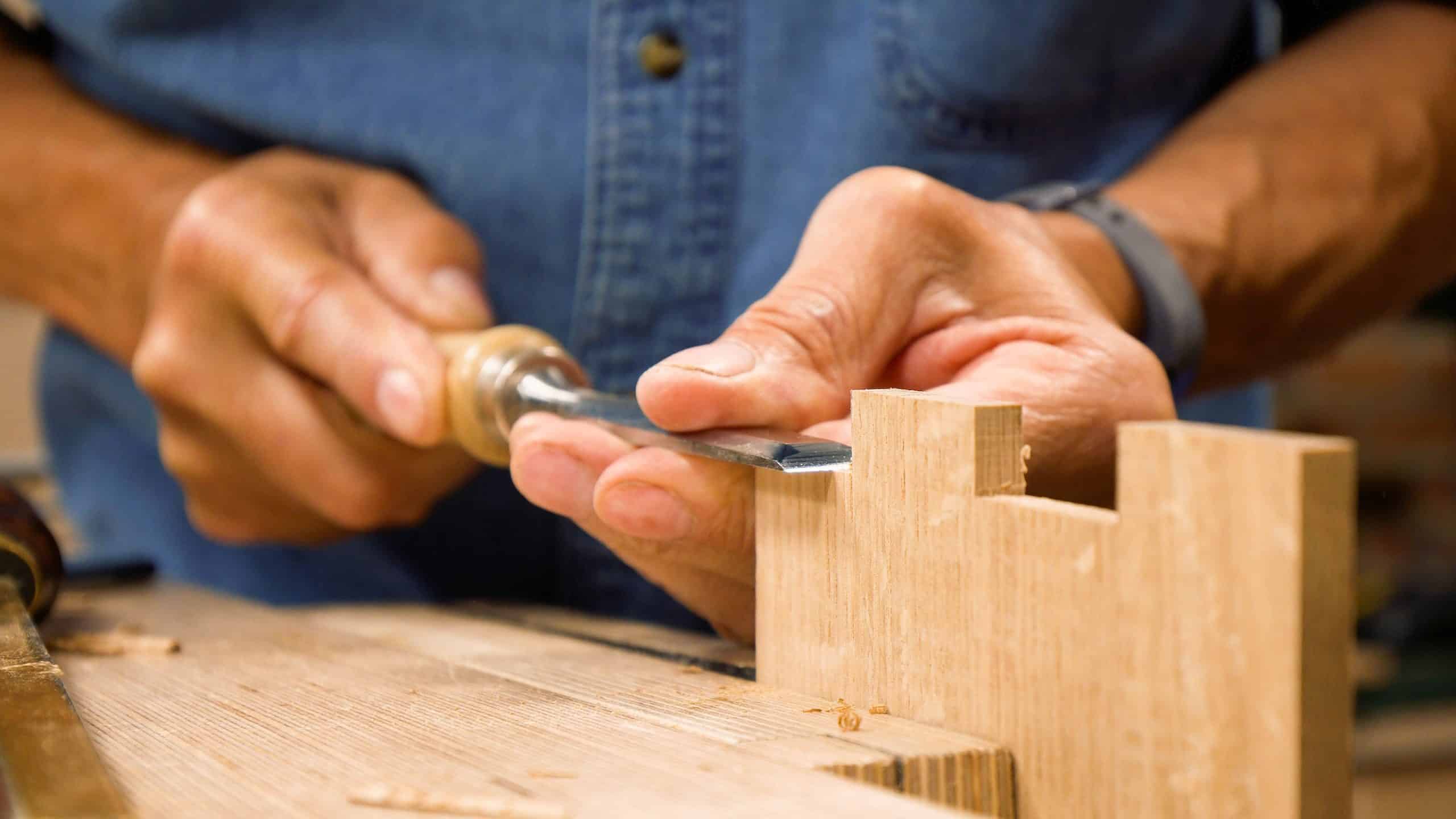Bread Stow: Episode 2
Posted 16 October 2019
This is an episode in a paid series. Want to watch it? You just need to sign up as a paid member, and you can enjoy this video and many other videos we think you will love.
Accuracy keeps cropping up minute by minute as you work to produce quality projects. This is particularly critical to the bread stow because of conciseness surrounding the joints. Paul describes his work using his sensory perceptions as he begins the joinery layout and then makes each of the corner joints. In this episode, he simplifies the processes as concisely as possible. From flat panels, he first lays out the corner joints to guarantee squareness and thus ensure that the slides end up exactly parallel.


Thank you Paul!
Mr Sellers you make everything look so easy. Great job.
Can you give the name of the music that is playing at the end of this session, it is very relaxing.
Thank you again for another fine video lesson.
Hi Larry,
Thank you for the kind words, I’m pleased you enjoyed it! This track is ‘The Sunset Glow’ by Tony Petersen.
Kind Regards,
Izzy
Thank you MS Berger. I found it.
I am totally fascinated by watching his hands work the tools. No pressure no powering just holding and letting the tool follow his heart
That was a lovely result! But I want more answers!
Why is it so difficult to achieve this effect by just staggering the ends?
Why do you make a knife wall in the end grain when you usually don’t?
Could you not mark the second piece by laying the first flat on top of the second?
Thank you for continuing to show us such excellent examples to try to follow.
Hi,
Paul says:
There are many ways to achieve this, I’ve just shown you the easiest way. Doing it your suggested way you have many issues such as slippage during glue up, misalignment to to both ends of the panel.
In regards to the knife, I was using hardwood which I always use the knifewall for. Only on soft woods will I use a pencil on the end grain.
Yes you could, these are all great suggestions but they come with built in flawed perceptions. For instance, laying one board flat on top of the other is not as exact as laying it in the precise position it will be when it enters the counter part.
Kind Regards,
Izzy
I have been watching many videos, and I have thoroughly enjoyed each one.
I do have a question as to the reasoning behind the bevel-down chopping. In every video about dovetails, the bevel-up with a steep angled approach has been quite consistent. Why the different type of chop into the knife-wall on this project?
Best,
Scott Stephens
Hi Scott,
At 10:36 Paul says: ‘Bevel down again this time, this will cause an undercut and helps to sever the fibres and split them along the grain’. He’s taking advantage of the solidity of the bench with a direct downward chop. And the reality of the board being very wide, would need under support because it can’t really be clamped too well in the vise.
Kind Regards,
Izzy
Thank you for the reply, Izzy. That makes sense seeing it in type-face and re-watching/listening a little closer.
Best,
Scott Stephens
We are all very privileged to be able to watch a true artist at work.
Rather than screws to fasten the corners, I think I’ll use small dowels to peg them, maybe of a contrasting color such as rosewood or ebony.